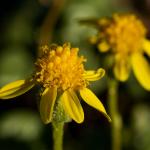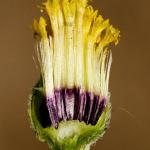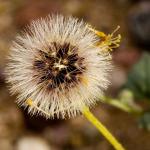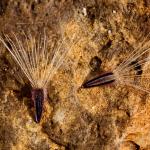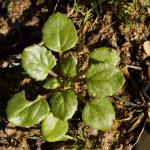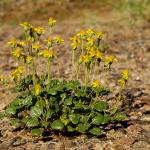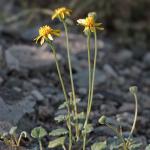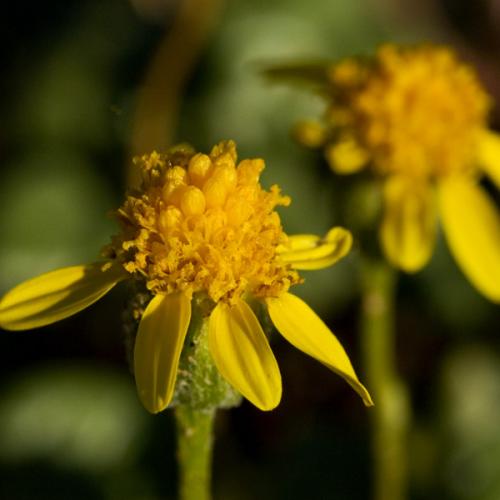Bartlettia scaposa (Bartlett Daisy)
NONE
Annuals, 5-25 cm tall; stems erect to spreading, branched from the base; leaves mostly basal, sub-opposite or alternate, petiolate, blades deltate, to elliptic, margins serrate, hirsute or glabrate; heads radiate, borne singly; involucres turbinate to hemispheric, mostly 7-9 mm diameter; phyllaries 8-22, 2-3 series, lanceolate to linear, unequal, glandular-puberulent; ray florets 5-13, pistillate, corollas golden-yellow; disk florets 30-90, bisexual, corollas yellow, sometimes suffused with purple, lobes 5; cypselae linear, membranous scales, margins ciliate; pappi 17-22, bristles. Flowers summer through fall following rains.
The leaves resemble some species of Perityle, but all Perityle in New Mexico are sub-shrubs while Bartlettia is an herbaceous annual.
New Mexico: Hidalgo and Luna counties; Texas, Hudspeth County; Mexico, Chihuahua, Durango and Zacatecas.
Gravelly, sandy clay, and fine clay-adobe soils in grasslands, playas and desert scrub at 1,000-1,900 m (3,280–6,235 ft).
Bartlettia scaposa is known from about 30 collections, mostly from Mexico. There were 13 collections from the 1850s to the early 1960s, about 13 in the 1970s and 1980s, and then no more until collections in Hidalgo County, New Mexico, in 2010. This annual plant grows with summer rains; it is unlikely to be observed in unfavorable years.
As an example of this plant’s opportunistic nature, Richard Spellenberg reports it was common on barren surfaces south of Hachita, New Mexico, in 2010. In that year he also saw it very locally distributed in Hudspeth County, Texas. The following year, 2011, he reports seeing no plants in those locations - everything crispy dry.
Investigations while preparing this report revealed more collections in Mexico and a somewhat broader range in Mexico than previously known. That, combined with its opportunistic growth in a variety of abundant habitats and soils leads the NMRPTC to conclude that Bartlettia scaposa does not qualify as rare under NMRPTC criteria.
Some populations of Bartlettia scaposa are threatened by roadside maintenance. More searches are needed in favorable years to better understand its abundance and distribution.
Correll, D.S. and M.C. Johnston. 1970. Manual of the vascular plants of Texas. Texas Research Foundation, Renner, Texas.
*Flora of North America Editorial Committee. 2006. Flora of North America, volume 21. Oxford University Press, New York.
*Powell, A.M. 1963. An emended description of the monotypic genus Bartlettia A. Gray (Senecioneae) with distributional notes. The Southwestern Naturalist 8(3):117-120.
For distribution maps and more information, visit Natural Heritage New Mexico

